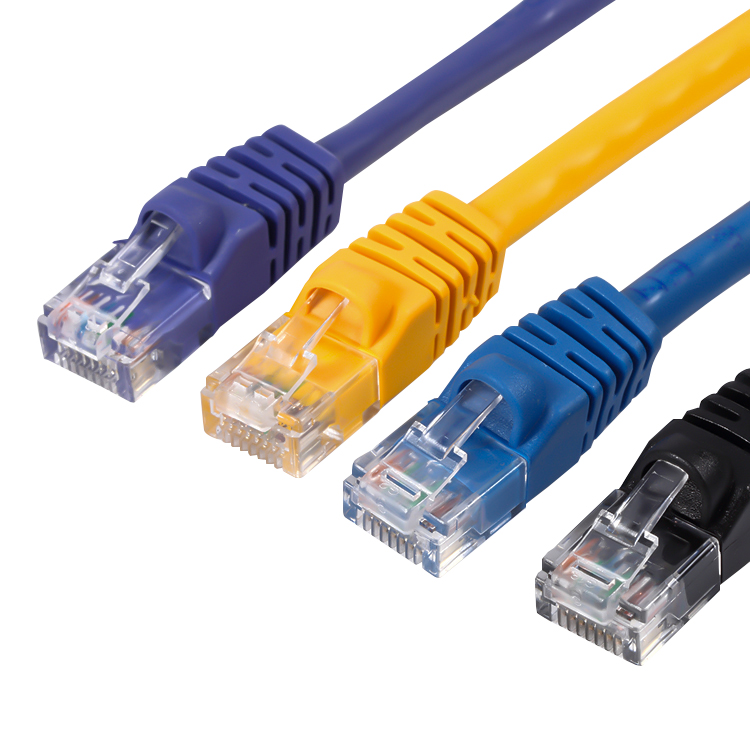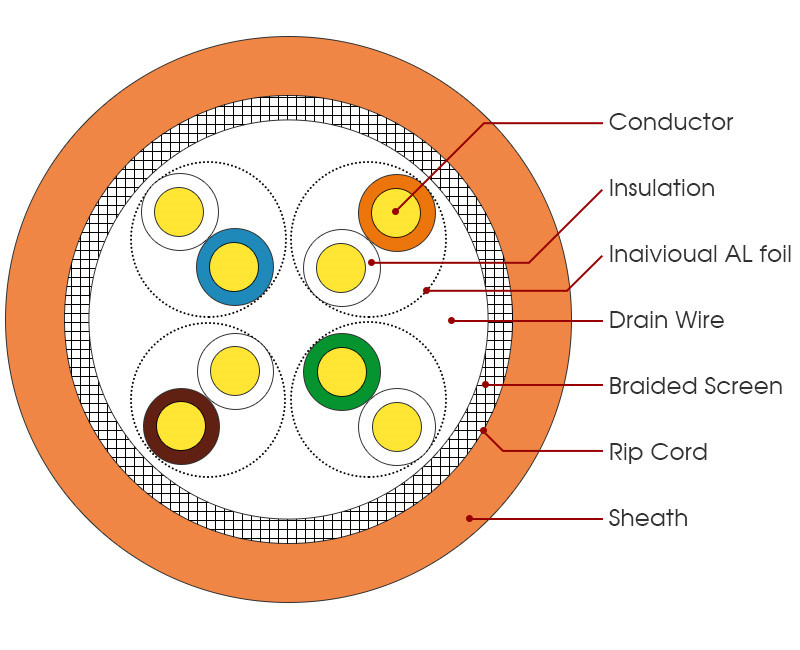Table of Contents
Understanding the Different Types of Ethernet Cables
Understanding the Different Types of Ethernet Cables
Ethernet cables are the backbone of modern networking, facilitating the transfer of data between devices in a local area network (LAN). There are several types of Ethernet cables available, each with its own unique characteristics and use cases. In this article, we will delve into the various types of Ethernet cables, their differences, and when to use them.
First and foremost, it is essential to understand that Ethernet cables are categorized based on their performance and capabilities. The most common types of Ethernet cables are Cat5, Cat5e, Cat6, Cat6a, and Cat7. These categories refer to the specifications and standards that the cables meet, determining their speed and bandwidth capabilities.
Cat5 cables were once the standard choice for Ethernet networking. They can support speeds of up to 100 Mbps and are suitable for basic networking needs. However, as technology advanced, Cat5e cables emerged as an improved version, capable of handling speeds of up to 1 Gbps. Cat5e cables are now widely used in homes and small businesses for their enhanced performance.
Moving up the ladder, Cat6 cables offer even higher performance, supporting speeds of up to 10 Gbps over short distances. These cables are ideal for demanding applications that require high-speed data transfer, such as streaming high-definition video or large file transfers. Cat6a cables, on the other hand, are designed for even greater performance, supporting speeds of up to 10 Gbps over longer distances.

Cat7 cables represent the latest advancement in Ethernet cable technology, boasting speeds of up to 10 Gbps and improved shielding to reduce interference. These cables are typically used in professional settings where high-speed and reliable networking is crucial, such as data centers and server rooms.
When choosing the right Ethernet cable for your network, it is essential to consider factors such as speed requirements, distance limitations, and budget constraints. Cat5e cables are suitable for most home and small business networks, offering a good balance of performance and affordability. For more demanding applications, such as gaming or multimedia streaming, Cat6 cables provide the necessary speed and bandwidth.
In conclusion, understanding the different types of Ethernet cables is crucial for building a reliable and efficient network. By choosing the right cable for your specific needs, you can ensure optimal performance and seamless data transfer within your network. Whether you opt for Cat5e, Cat6, Cat6a, or Cat7 cables, each type offers unique advantages that cater to different networking requirements.
Exploring Fiber Optic Cables for High-Speed Networks
Fiber optic cables have revolutionized the way data is transmitted across networks, offering unparalleled speed and reliability compared to traditional Copper cables. These advanced cables utilize light to carry data over long distances, making them ideal for high-speed networks that require fast and efficient data transmission. In this article, we will delve into the world of fiber optic cables, exploring their types and benefits for modern networking applications.
One of the most common types of fiber optic cables used in high-speed networks is single-mode fiber. Single-mode fiber is designed to carry a single ray of light, allowing for data transmission over long distances with minimal signal loss. This type of fiber optic cable is well-suited for applications that require high bandwidth and long-range connectivity, such as Telecommunications networks and data centers.
In contrast, multi-mode fiber optic cables are designed to carry multiple rays of light simultaneously, making them ideal for shorter distance applications within buildings or campus networks. While multi-mode fiber may not offer the same long-distance capabilities as single-mode fiber, it is a cost-effective solution for high-speed data transmission over shorter distances.
Another important consideration when choosing fiber optic cables for high-speed networks is the connector type. There are several common connector types used in fiber optic networking, including LC, SC, and ST Connectors. LC connectors are small form-factor connectors that are ideal for high-density applications where space is limited. SC connectors are easy to install and provide good performance for most networking applications. ST connectors are commonly used in industrial environments due to their durable design and reliable performance.
| Nr. | Commodity Name |
| 1 | jack wiring cable |
When it comes to installation, fiber optic cables require careful handling to ensure optimal performance. Proper cable management and termination are crucial to maintaining signal integrity and minimizing signal loss. Additionally, fiber optic cables should be installed and tested by trained professionals to ensure proper functionality and performance.
In conclusion, fiber optic cables are a crucial component of high-speed networks, offering fast and reliable data transmission for a wide range of applications. By understanding the different types of fiber optic cables available and their benefits, network administrators can make informed decisions when designing and implementing high-speed networks. Whether you are building a telecommunications network, a data center, or a campus network, fiber optic cables provide the speed and reliability needed to keep data flowing smoothly and efficiently.
Comparing Cat5, Cat6, and Cat7 Cables for Networking Applications
When it comes to setting up a reliable and efficient network, choosing the right type of data cable is crucial. Three popular options for networking applications are Cat5, Cat6, and Cat7 cables. Each of these cables has its own set of characteristics and capabilities that make them suitable for different networking needs.
Starting with Cat5 cables, these are the most basic and commonly used Ethernet cables. They are capable of supporting speeds up to 100 Mbps and have a maximum bandwidth of 100 MHz. Cat5 cables are suitable for basic networking tasks and are often used in home networks or small businesses where high-speed data transfer is not a top priority. However, with the advancement of technology and the increasing demand for faster internet speeds, Cat5 cables are becoming less common in modern networking setups.
Moving on to Cat6 cables, these are an improvement over Cat5 cables in terms of speed and performance. Cat6 cables can support speeds up to 10 Gbps and have a maximum bandwidth of 250 MHz. This makes them ideal for high-speed networking applications such as gaming, video streaming, and large file transfers. Cat6 cables are also more resistant to crosstalk and interference, thanks to their improved shielding and twisted pair design. As a result, they are a popular choice for businesses and organizations that require a reliable and fast network connection.
Finally, we have Cat7 cables, which are the latest and most advanced option among the three. Cat7 cables can support speeds up to 10 Gbps and have a maximum bandwidth of 600 MHz. They are designed to provide even better performance and reliability compared to Cat6 cables, thanks to their improved shielding and construction. Cat7 cables are also backward compatible with Cat6 and Cat5 devices, making them a versatile choice for upgrading existing network infrastructure.
In terms of cost, Cat5 cables are the most budget-friendly option, followed by Cat6 cables, and then Cat7 cables, which are the most expensive. When deciding which cable to choose for your networking needs, it’s important to consider factors such as speed requirements, budget constraints, and future scalability.

| Number | Products |
| 1 | Ethernet Cable|internet cable |
Overall, Cat5 cables are suitable for basic networking tasks, Cat6 cables are ideal for high-speed applications, and Cat7 cables offer the best performance and reliability. By understanding the differences between these cable types, you can make an informed decision when setting up or upgrading your network infrastructure.
